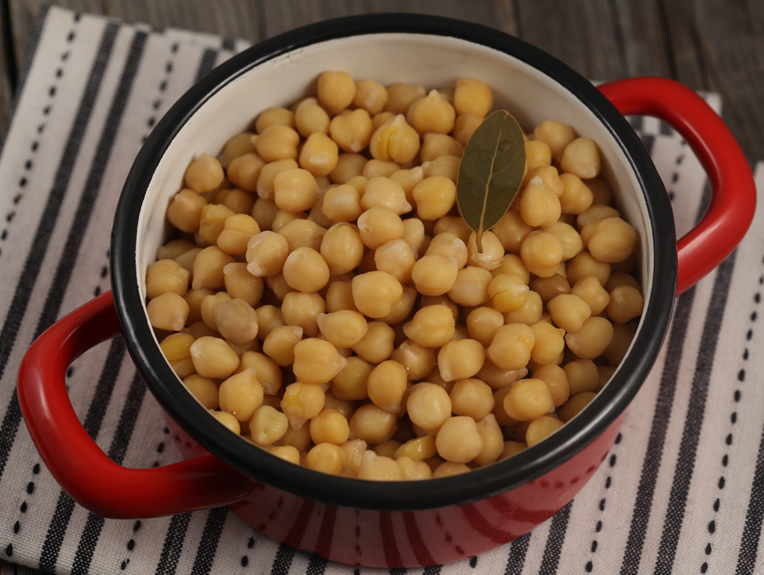How to Cook Dry Chickpeas – Nutrition and Preparation Guide
Chickpeas (Naut) are rich in protein, essential minerals (phosphorus, potassium, magnesium, calcium, iron), and B-complex vitamins. With a high protein content (24%) combined with carbohydrates and fats, chickpeas offer exceptional nutritional value, often serving as a healthy alternative to meat protein. — Wikipedia
Ingredients
- 500 g dry chickpeas
- 2 bay leaves
- 1 slice celery root (optional)
- 1 tsp baking soda (optional)
- Salt
How to Cook Dry Chickpeas
- Soaking:
Place the dry chickpeas in a large bowl and cover generously with cold water. Soak overnight (12–15 hours), during which the chickpeas will roughly double in size.
If you need to soak them longer, refrigerate to prevent fermentation. - Rinse:
Drain the soaking water and rinse chickpeas several times in clean water. - Boiling:
Put chickpeas in a pot with plenty of water, bay leaves, celery root slices, and optionally baking soda — but do not add salt yet.
Note: Baking soda softens chickpeas and reduces cooking time and gas but may reduce some vitamins. Use it according to your preference, especially if making hummus for a creamier texture.
Example: Chickpeas cooked with baking soda softened faster by about 10 minutes (35 minutes vs. 45 minutes without). - Simmering:
Bring to a boil, then reduce heat to low so water simmers gently (vigorous boiling can break chickpeas). Skim off foam occasionally. - Check for Doneness:
After 30 minutes, check frequently by squeezing a chickpea between your fingers—if it crushes easily, it’s done.
Cooking time varies from 30 minutes to 2 hours depending on size and dryness. - Salt:
Add salt only after chickpeas are tender. - Cooling:
Turn off heat, cover the pot, and let chickpeas cool completely in the cooking liquid.
Storing Cooked Chickpeas
- For short-term storage, keep chickpeas submerged in their cooking water in the refrigerator to prevent drying.
- Use the cooking liquid in hummus or chickpea spreads for extra flavor.
- The chickpea skins are transparent and can be rubbed off for smoother purees.
- For long-term storage, drain chickpeas, portion into bags or containers, and freeze.
💡 Tips
- Avoid adding salt before chickpeas are cooked to prevent toughening.
- Baking soda is optional; use sparingly if you want a creamier texture.
- Always check chickpeas during cooking to avoid overcooking or mushiness.
- Use cooled cooking liquid (aquafaba) as an egg white substitute in vegan recipes!
📝 Final Thoughts
Perfectly cooked chickpeas form the base of many nutritious dishes, from hearty stews to creamy hummus. Taking the time to soak and cook them properly enhances both texture and flavor, making your meals wholesome and satisfying.


